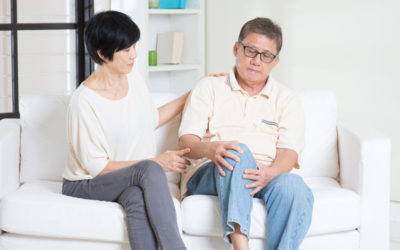
I will never forget this amazing woman. When she first came to see me she was about 20 years post-stroke. She had worked very hard to regain her mobility, and as a commitment to improving her overall health she had been going to the gym regularly without fail since she had regained enough ability to do so after her stroke. Most people last less than a year before bailing on their fitness plan, but she had stuck with it for 20 years.
The reason she came for help was that she had begun to experience pain. It had gotten so bad that not only was she no longer able to go to the gym, she was having trouble with everyday activities like going up and down stairs. She saw her family doctor who essentially told her that her pain was age related and part of the natural progression post-stroke. Fortunately a friend convinced her otherwise and told her she should come and see me.
When she walked in I could see that she was moving stiffly and cautiously. She told me that her right arm and leg had been becoming increasingly tight and painful. She thought it would improve if she continued exercising, but it only got worse. Having to stop going to the gym was a huge blow for her.
Strokes Don’t Mean Pain
The first thing I did was assure her that for most people pain was not a normal part of living with a stroke. Given that she had not had pain for the first 20 years post-stroke, there didn’t seem to be any reason why she should put up with a debilitating amount of pain now. The relief on her face was obvious when she heard this.
When I assessed the situation it became apparent that it was a lack of stability through her trunk and hips that was causing the increased tightness in her arm and leg. But what brought this on at this particular point in time? It could have been any number of things – a near-fall (these are often more traumatic for the body than when you actually fall), a minor back pain, an irritating pain from a repeated movement. Something had occurred to upset her apple cart and start a cascade of events that led to her having pain.
Even though we never figured out the original cause of this cascade, what was readily evident was that she needed to improve her central stability. We worked on improving the alignment through her trunk and hips to allow the muscles there to better activate. We challenged her balance in increments and we worked on releasing her tight limbs.
Back to Normal
In time she was able to return to her everyday activities, and then to her beloved workouts. Needless to say she was very happy with returning to her usual routine. While I was thrilled for her, I was ultimately frustrated. I often see people many years post-neurological injury whose function is deteriorating. They are often told that this is normal, but conditions like stroke, cerebral palsy, or brain injury are not progressive disorders. Why, then, should people accept deterioration in their condition? It makes no sense to me. Granted, that if there is excessive wear and tear on joints (e.g. on the more often used stronger side of the body after a stroke) then there is definitely increased risk of osteoarthritis in those joints, which can produce pain. While I have certainly seen this, we should not assume that all pain that people are experiencing in that situation is due to joint deterioration. That’s just an easy cop-out in my opinion.
Central stability is certainly an issue post-neurological injury (to be clear, as a general rule it is an issue in most “normal” people too), but it should stabilize at some point. When people suffer a deterioration in function down the road, it is usually because something has tipped the balance on their central stability in the wrong direction. This is something that can be remedied with the proper treatment from a therapist skilled in treating people with neurological issues.
So if you’ve had a neurological injury some time ago, and then begin to experience pain at some point, don’t put up with it. Don’t let anyone brush you off and tell you to live with it. Seek help, for it is available.